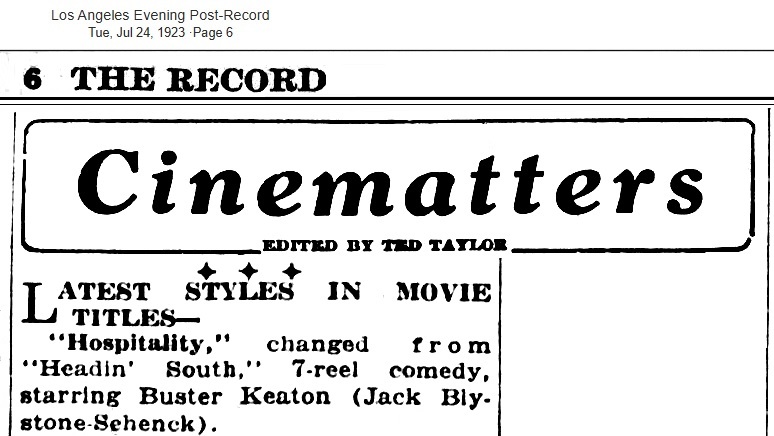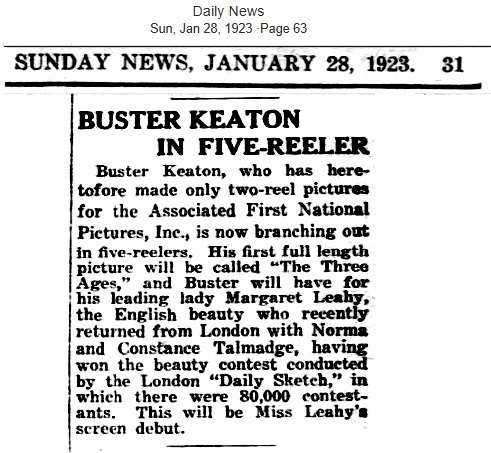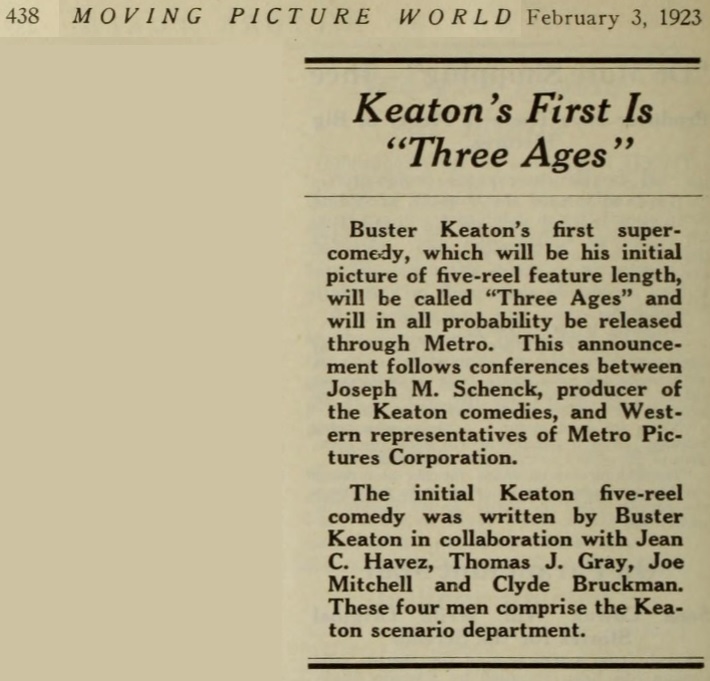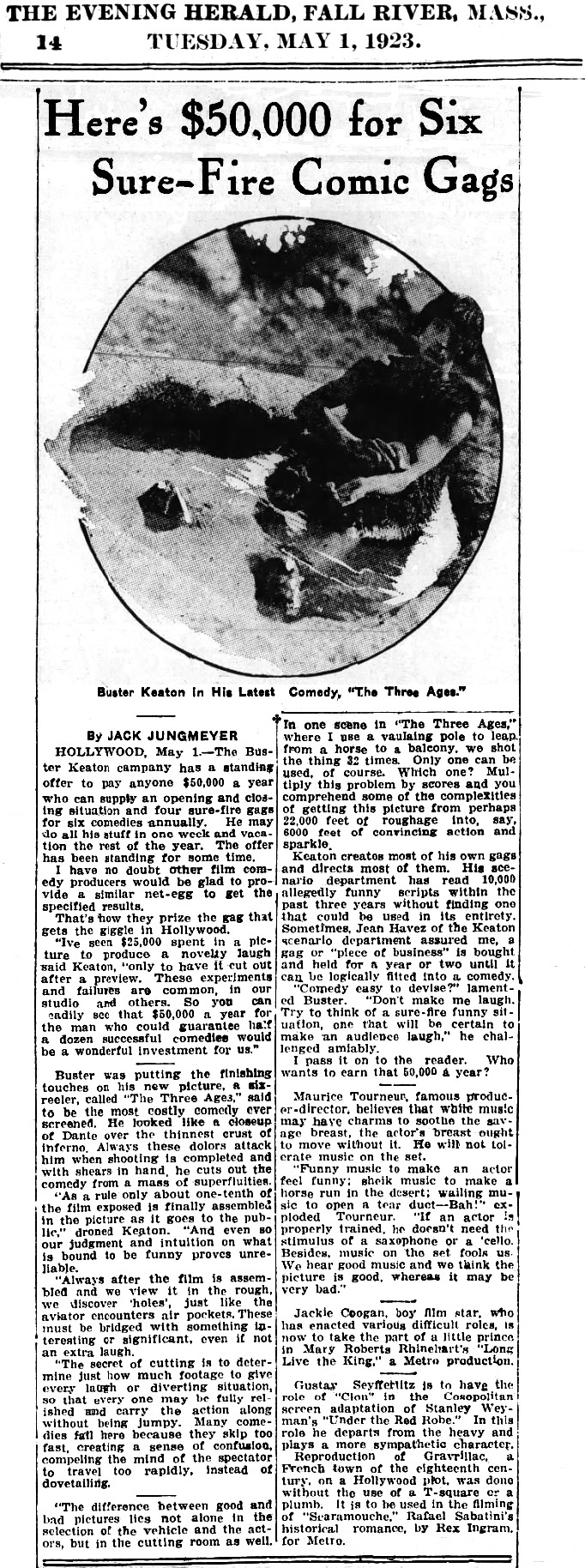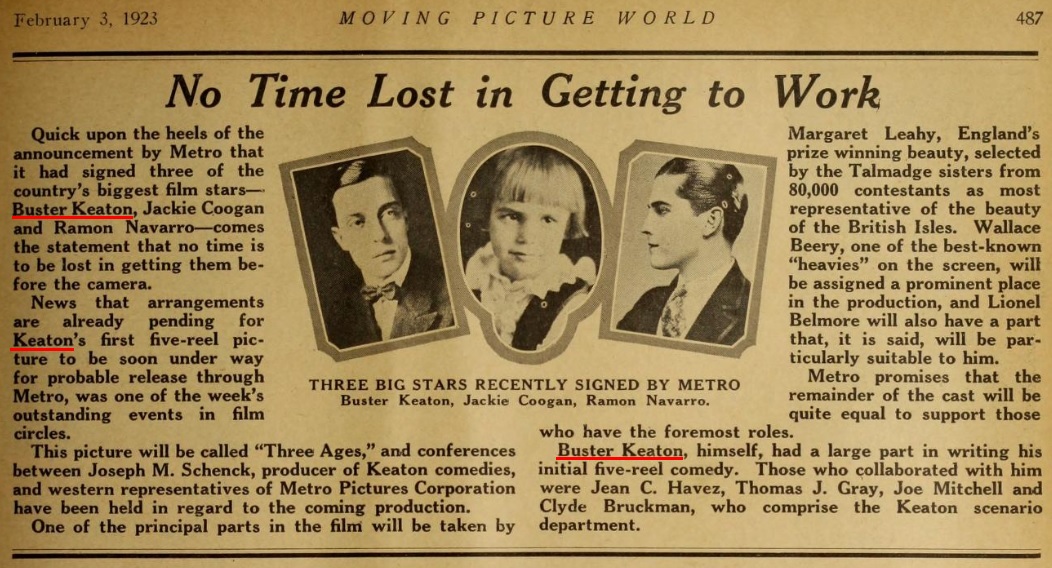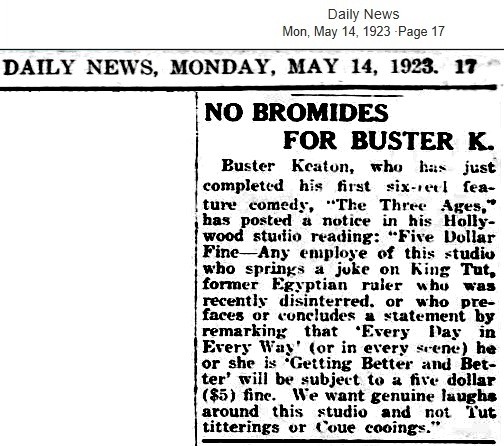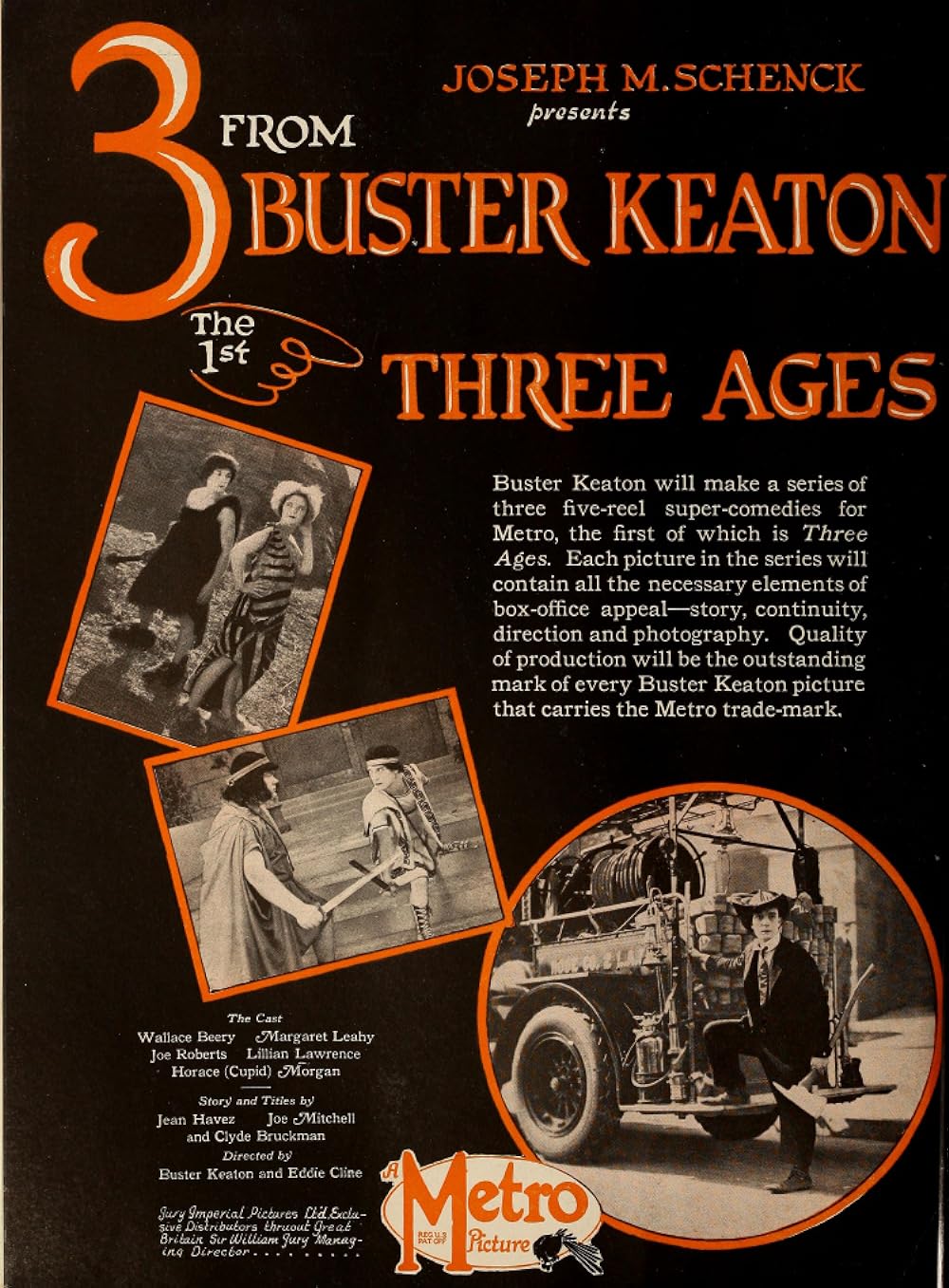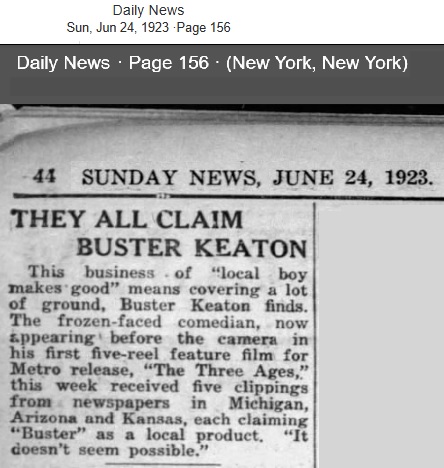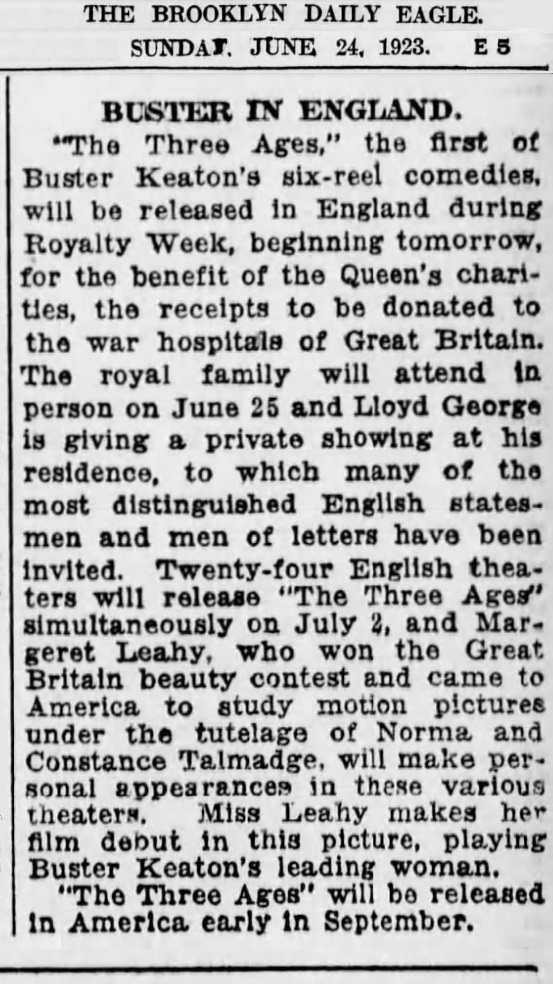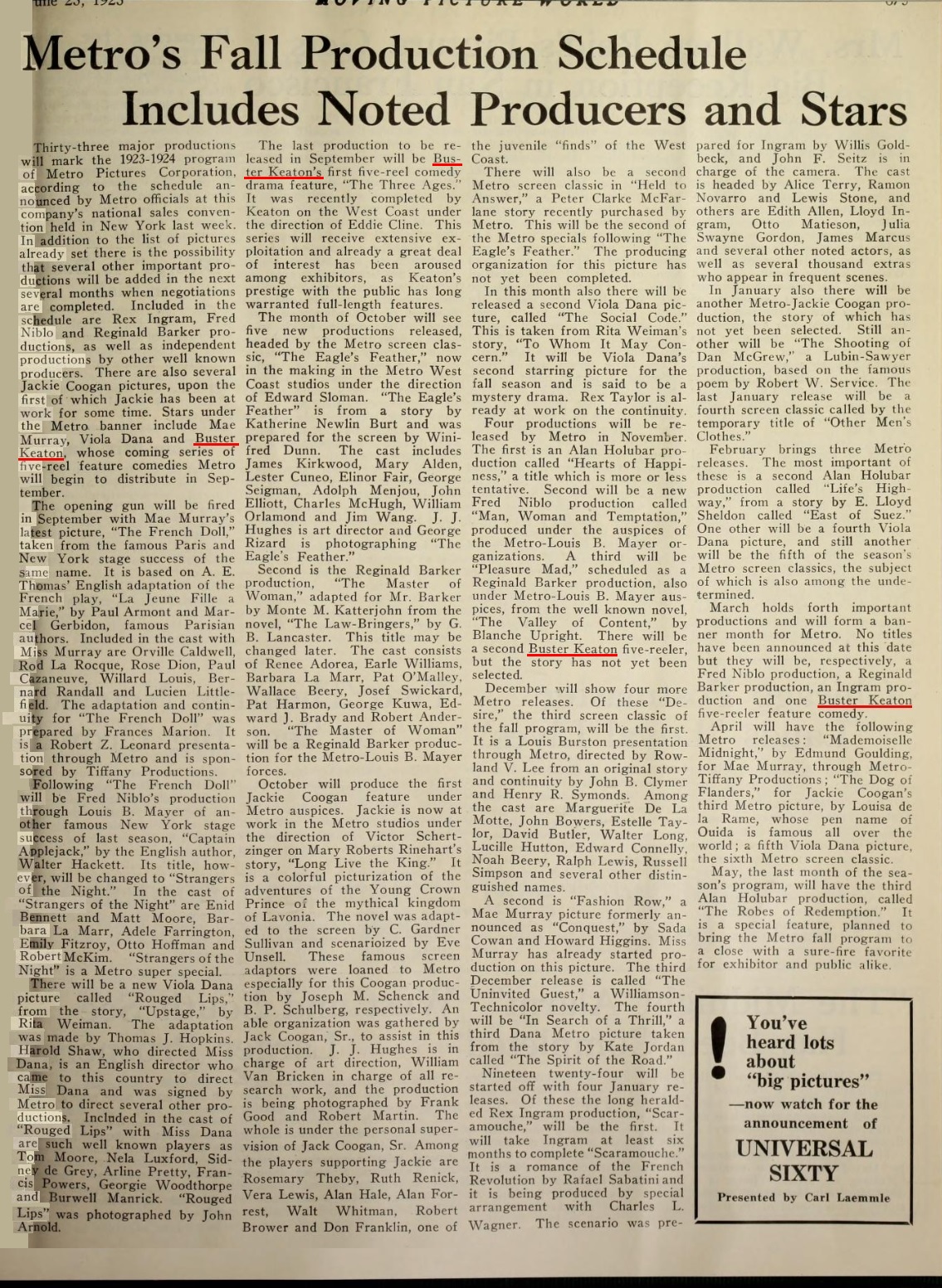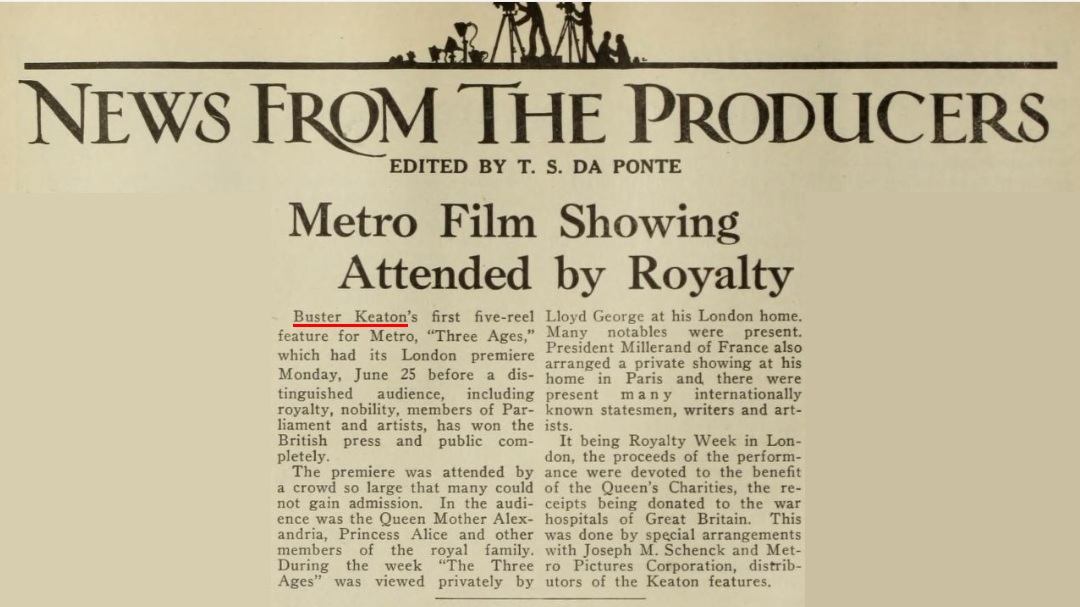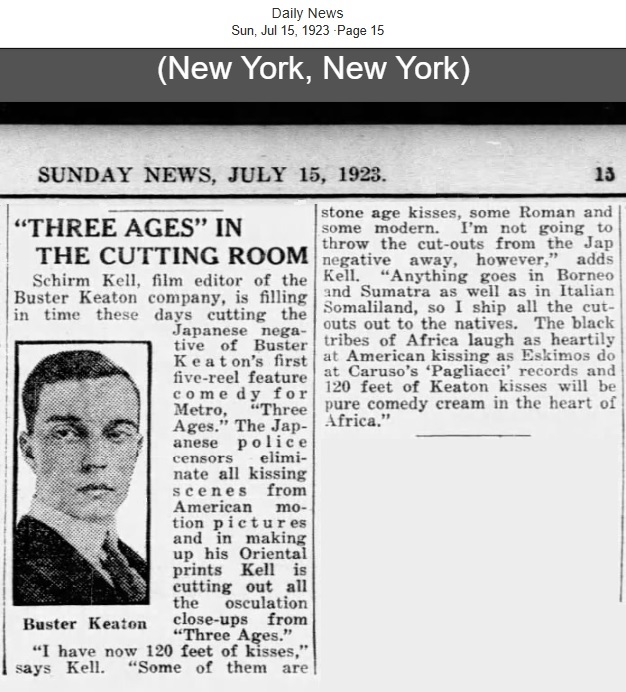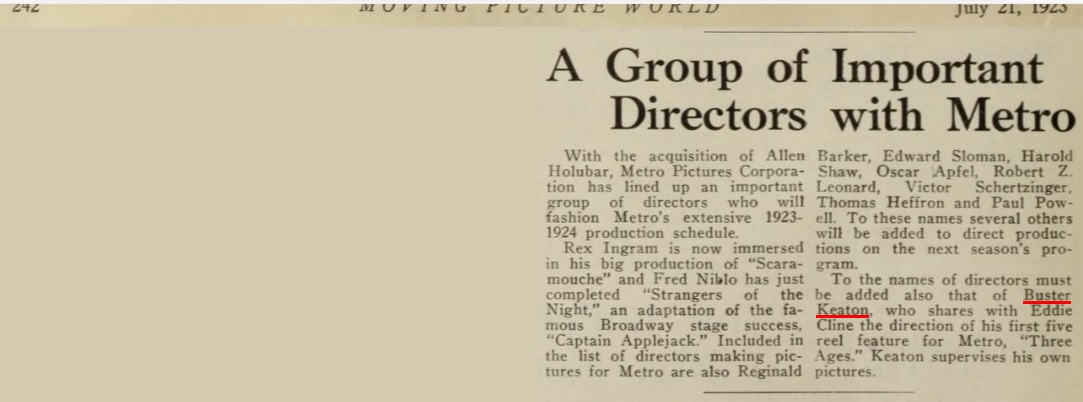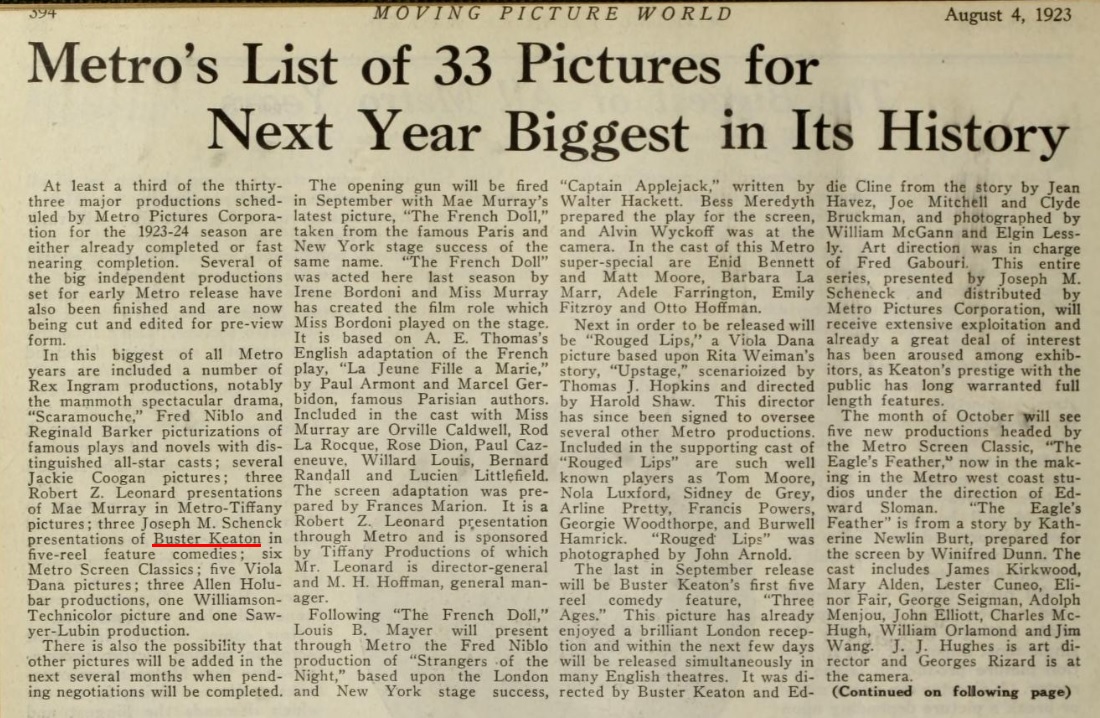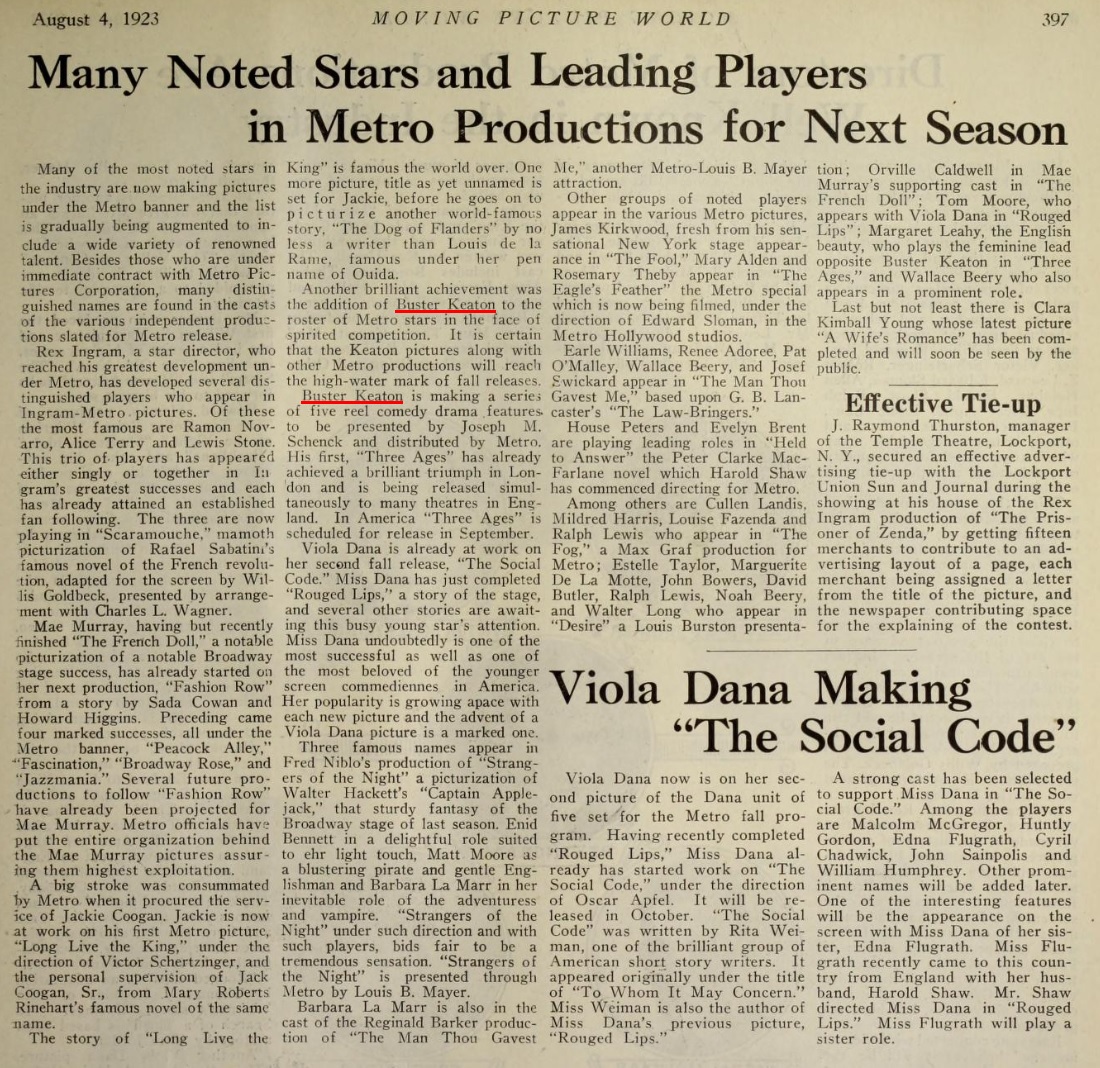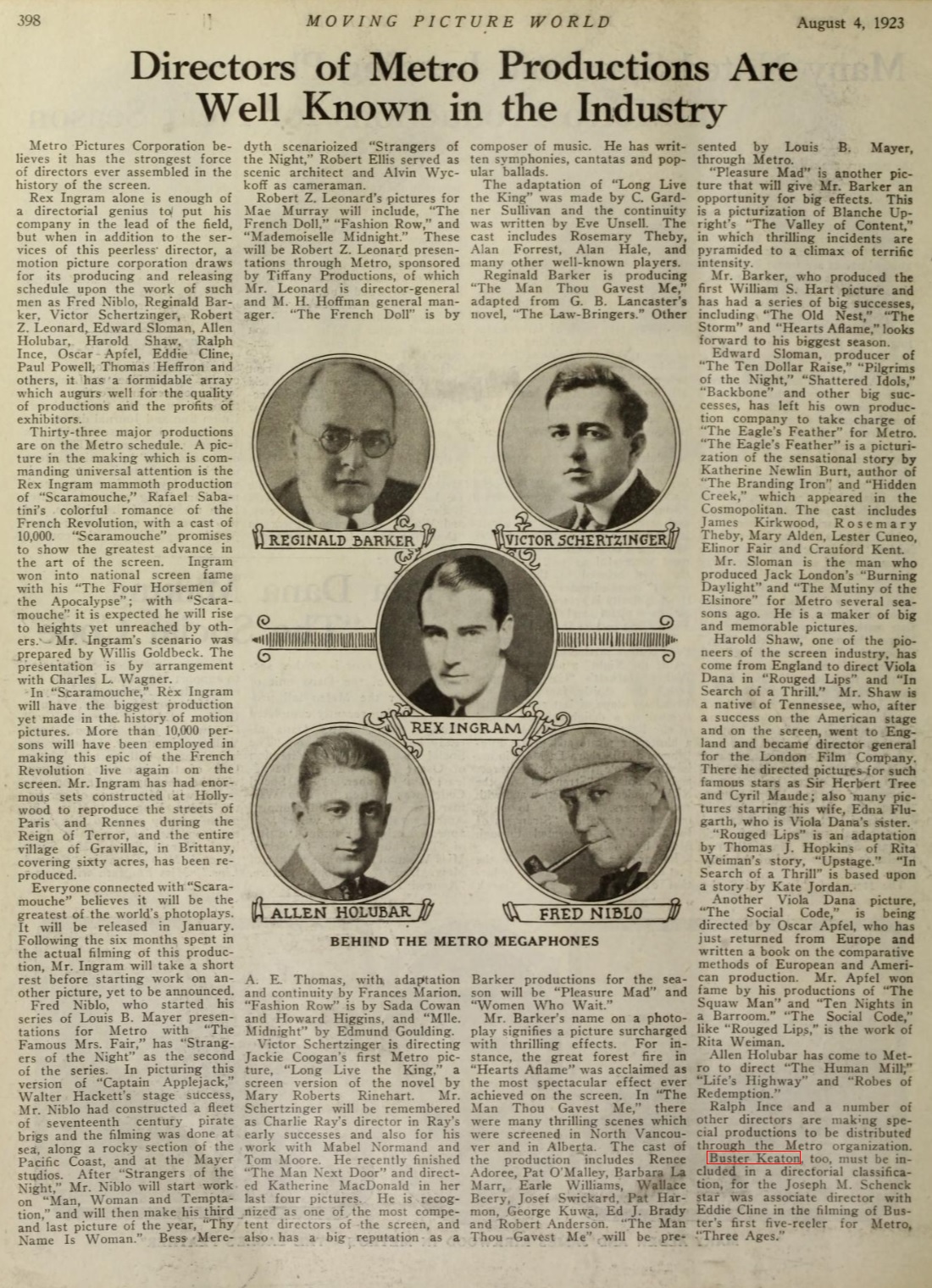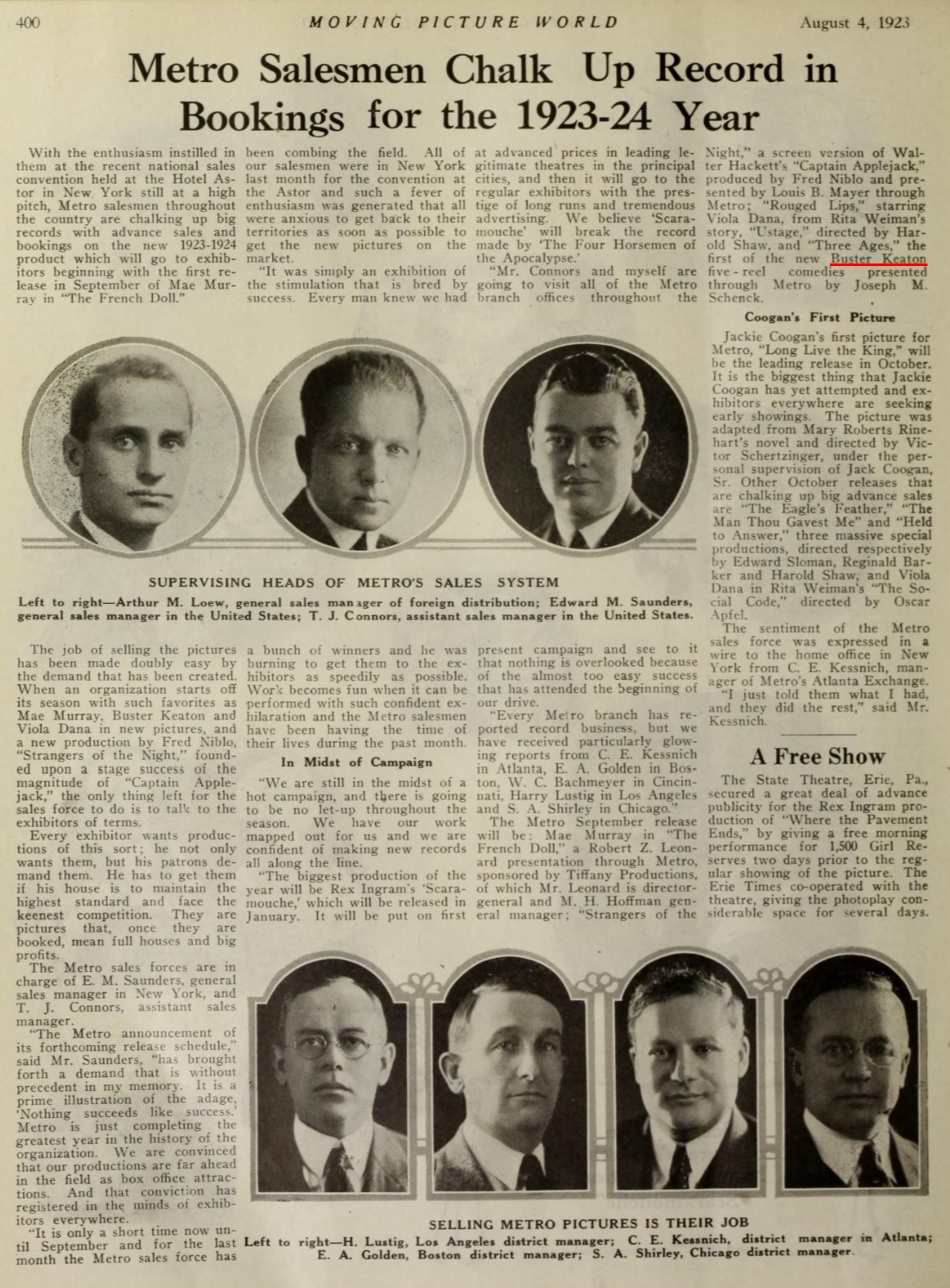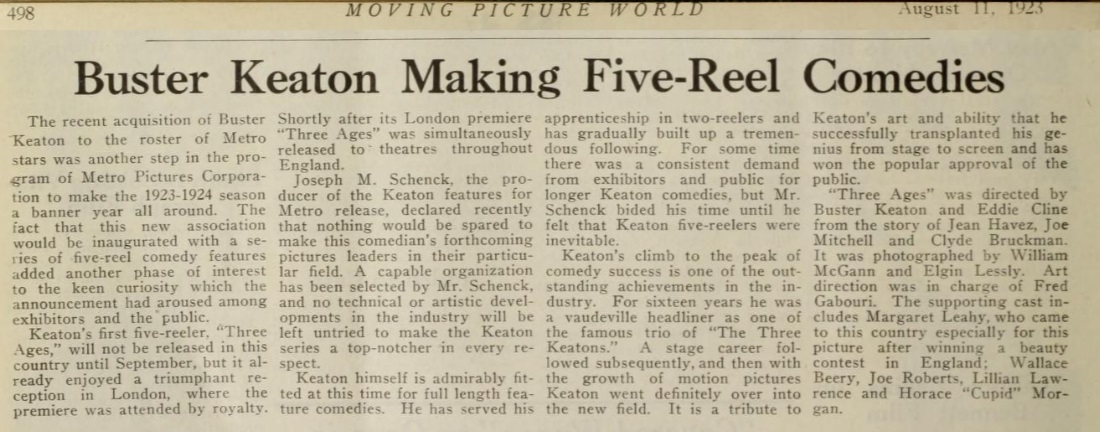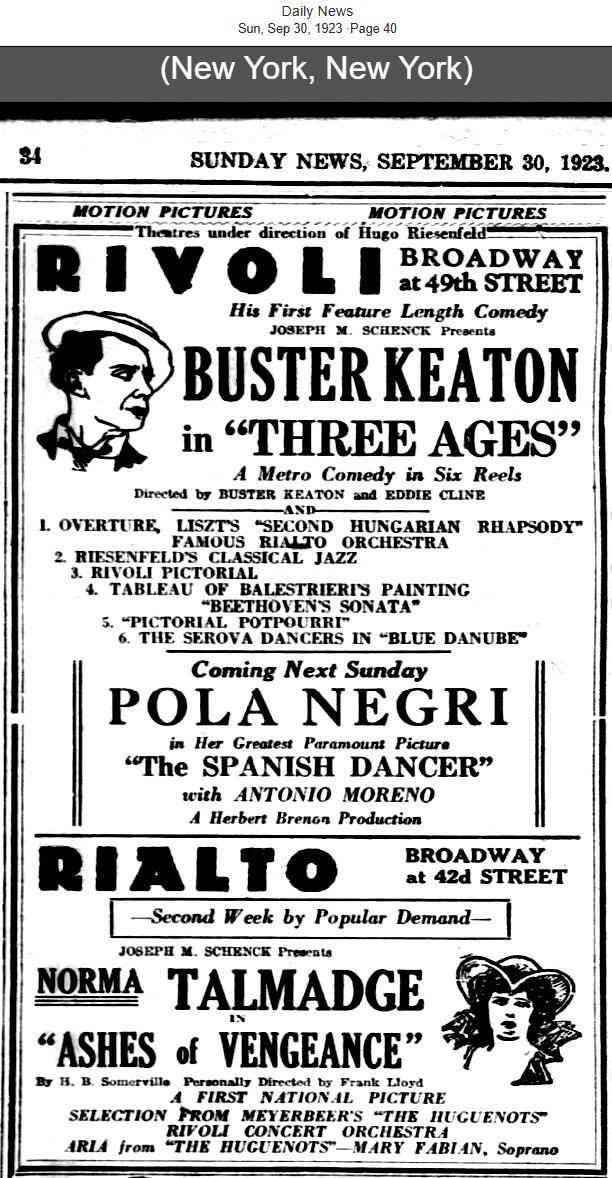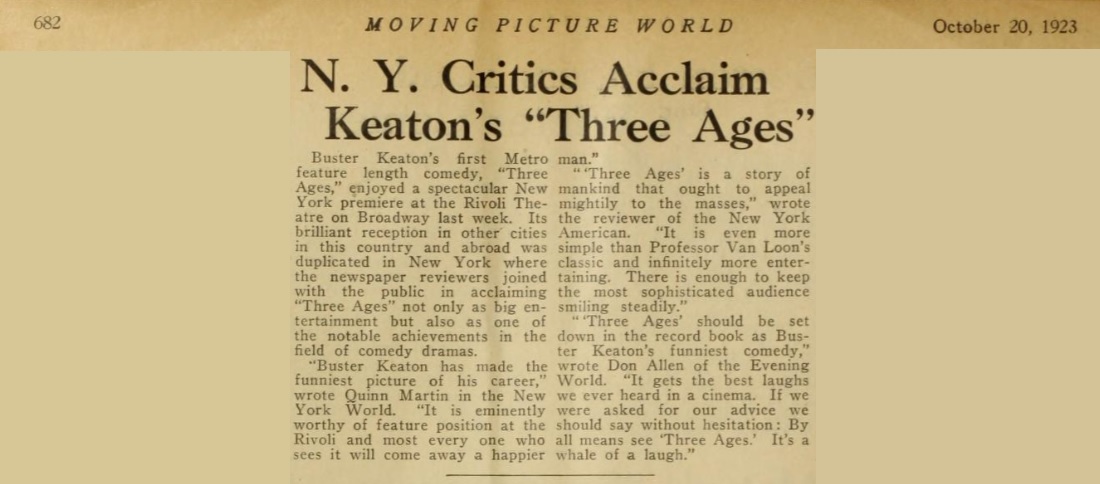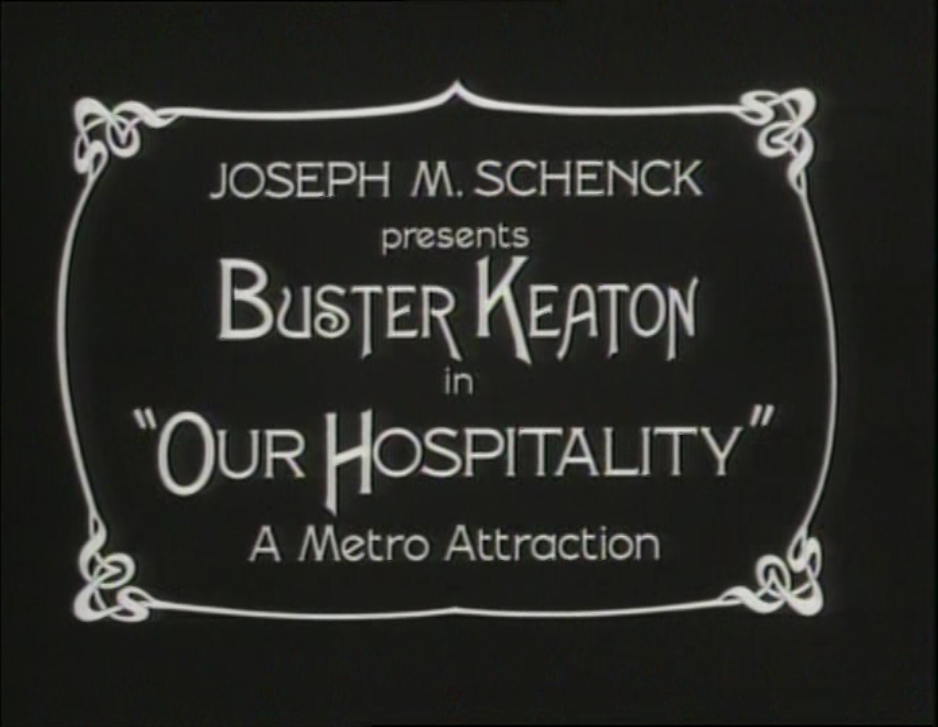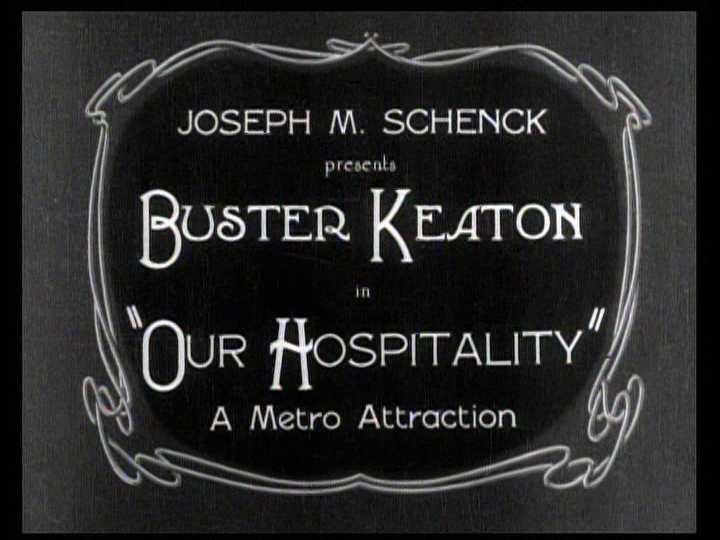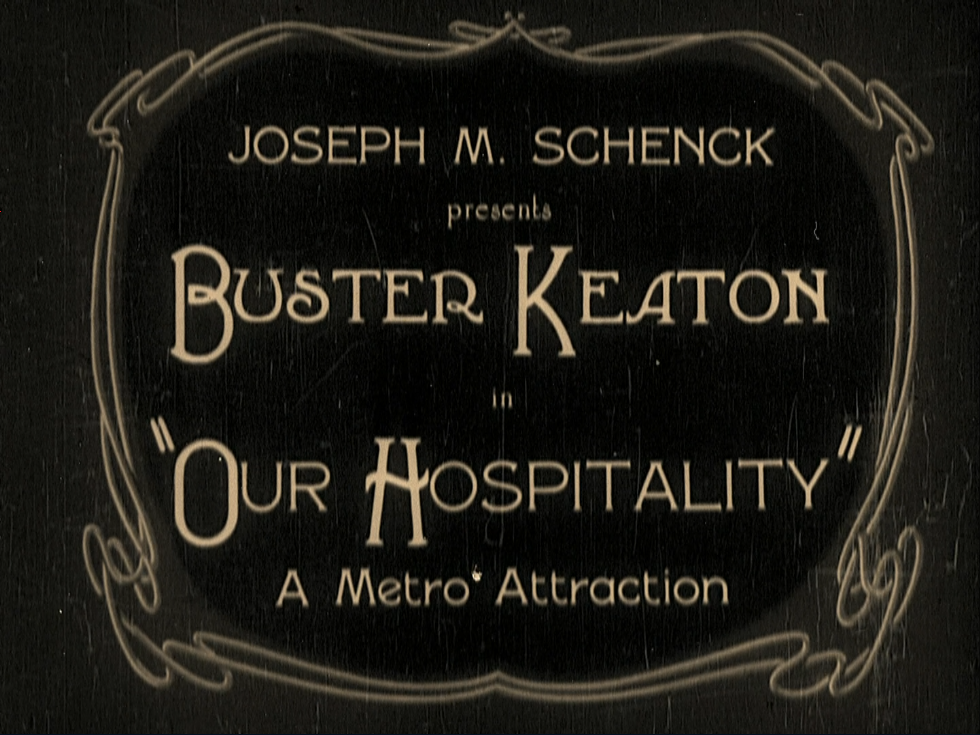The Mystery of
Buster’s First Three Features
Many moons ago, for The Keaton Chronicle,
I scribbled a review of the Our Hospitality Blu-ray
issued by Kino on 22 March 2011, catalogue number K715.
This one:
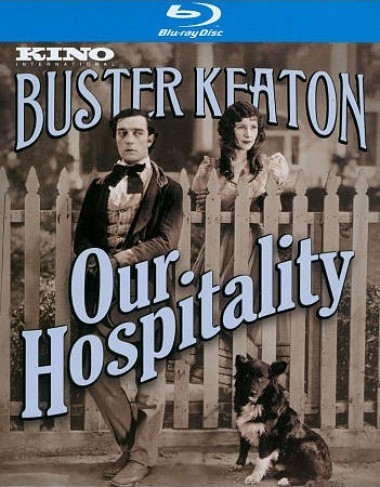
One of the supplements on the disc was a poor, cropped 16mm dupe
of a badly decomposed five-reel 35mm print that Buster had in his collection.
It was certainly among the films stored in his garage that Ray Rohauer collected in the summer of 1954.
The 35mm print is no longer available, since it entirely disintegrated probably not long after it was badly copied to 16mm.
Some Busterphiles had already seen the video of the 16mm dupe somehwere, probably at the annual Busterfest,
and they had wondered about it and had trouble making sense of it.
They came up with various theories that maybe Buster had originally created a short version that he later lengthened.
I think there were other postulations as well.
So, I was most curious to see it.
When the Blu-ray was issued, I purchased it right away, and,
because at the time I was unable to take screen shots of Blu-rays ,
I also purchased the DVD.
It was with some excitement that I selected the five-reel edition,
and as soon as the video started, I recognized exactly what it was.
This was the work of an editor who had been tasked with duping Buster’s rough cut
in order to attempt to shorten it to five reels.
That’s all it was. So simple.
It was obvious that some higher-up simply wanted the film shortened.
This was the first and surely the only rough attempt to do so, and it went no further.
That left me with a question: Why? Why would any boss want the movie shortened?
The only solution I could think of was that there must have been a contract stipulating that the film be five reels long.
Anyway, the result of the shortening was that the film no longer had any entertainment value.
Had this mutilated edition been released,
the financiers would have lost their investment and Buster’s movie career would have been over.
So the moneymen allowed Buster to complete his seven-reel edition.
Metro must have issued a form letter to the exhibitors who had pre-ordered the movie,
apologizing for the added length but assuring them
that the quality was fine enough that there would be no loss at the box office.
Just afterwards, I found a brief article in Variety, maybe just a paragraph or so,
which stated that Buster’s first three features for Metro would each be five reels.
A ha! Just as I thought!
Then I found more.
The first few listings for the previous feature, Three Ages, supplied its length as five reels!
A 1,000' reel can actually hold about 1,100' or a little more, depending on the thickness of the film stock,
and Three Ages was only
5,251' long.
It is common knowledge that Three Ages is mounted on six reels,
but could it have been mounted onto five reels for its first few bookings?
It could have, yes.
Apparently, though, it was not.
It was mounted onto six reels beginning with its world-première booking in June 1923,
as Olga Egorova has determined and as we can see below.
The references to it being issued on five reels were in error.
Probably no distributor or investor anywhere would gripe about a movie being a mere 251' over the maximum contracted length.
That’s not even three minutes over.
They would all just let it pass, probably without even a warning.
Our Hospitality, though, was a different matter.
It was 1,220' over the maximum stipulated length, about 14 minutes, give or take,
and that was inarguably a breach of contract.
Or was it?
We have an indication that Hospitality, as it was then called,
was intended, from the outset, as a seven-reeler.
